In preparation for an upcoming trip to the world’s first International Quiet Park, I interviewed Gordon Hempton of SoundTracker.com and cofounder of Quiet Parks International. His solid advice includes how to prepare for a journey into the Amazon jungle, how to be a better listener, and why protecting natural soundscapes is essential in a modern world.
About Gordon Hempton
For Gordon, an Emmy-award winning acoustic ecologist, recording natural sound is more than a mission – it’s a way of life. In the past 37-years, he has traveled the world to capture the Earth’s rarest sounds, those that escape the intrusion of man-made noise.
There are no end of people interested in his work. He has appeared on Oprah.com, OnBeing, New Lines Magazine and National Geographic (find the video further in the article). But perhaps his most extensive interview is with the BBC where he shares why he became an acoustic ecologist in this online article: The world’s most endangered sound. Please check it out!
Or watch our personal favorite, this Op-Doc from the New York Times:
I came to know Gordon during my time as a design student with the Transformational Travel Council. During the course, we learned how quiet plays an integral role in the creation of a transformational travel experience. Gordon and his cofounder, Vikram Chauhan, taught our class about their all-volunteer non-profit dedicated to saving quiet and the reasons behind why they formed the non-profit in the first place.
Why We Need To Save Quiet
They explained how very difficult it is to find places to listen to the natural world without noise pollution.
Living in noisy places adds stress to our lives, exacerbating health conditions like cardiovascular disease, hypertension, sleep disorders, cognitive impairment, hearing impairment, and more.
Yet when we experience quiet, it not only helps improve our health, it increases our ability to pay attention, improves our mood, and can reduce pain. Quiet is essential to a well-balanced life.
Incredibly, 97% of US Americans are exposed to noise from aviation and highway traffic (Bureau of Transportation Statistics, United States Department of Transportation) and the National Institute of Health reports that as many as 17% of teenagers are already experiencing hearing loss in one or both ears.
It can be next to impossible for most US Americans to experience true quiet, especially quiet in nature. And the same can be said worldwide. As we lose broad swaths of Amazon jungle, Andean Cloud Forests, and Peatlands in the Congo, we lose far more than flora and fauna. We lose entire ecosystems that provide natural quiet.
Designing a Quiet Experience
It was about a year after I took the TTC Design course that someone reached out via this website and asked about how to visit the Zabalo River Wilderness and the caretakers of the land, the Cofán.
The result is a trip I like to call the Sounds of Ecuador: From the Andes to the Amazon. The highlight of the tour is definitely the 6-days we will spend with the Cofán, three of them in the wilderness, camping for two nights in the quietest of places in the world.
The Zabalo Community is remote and while it is possible to arrive in a single day from Quito, the trip is long. Instead, working with my partner Jacqueline Granda, we designed a longer tour that allows us to slowly leave behind the sounds of Quito’s busy cobblestoned streets and to teach ourselves how to listen again.
Our tour integrates the sounds of the Andes from the capital city to the high mountain pass of Papallacta to the small eco-lodge called Guango where the rushing waters of the high paramo fall downslope through lush cloud forests, dulling the sounds of truck tires on wet pavement from the highway that passes nearby. We will stay two nights in Quijos along a white water river where Andean Cocks-of-the-Rock congregate in leks in the late afternoon, squawking their greetings to one another. Then, we will meet the Cofán and travel to their village deep in the Cuyabeno Wildlife Reserve.
At that point, Jacquie and I stopped planning. We place our trust in the Cofán and will place ourselves in their hands the next 6 days, accepting what may come.
On our return, we will spend another two nights at an eco-lodge with a birdwatching focus. We will want the space and time to process our experience. Jacquie and I were afraid that a rapid return would make it difficult to retain the lessons learned on our journey with the Cofán, lessons we think will be essential to becoming the people we are intended to be.
We could not have designed this trip without Gordon’s input and advice. We also greatly appreciate the insight provided by Randy Borman, a Cofán elder and advocate for the Cofán Survival Fund. I plan on writing about Randy after our visit, when I’ve had the opporunity to meet him in person. These two men, in partnership together, have created something much larger than themselves.
Gordon’s Recommendation for Experiencing Quiet
You don’t have to be a sound ecologist, a recording artist, or a PhD student in music to appreciate natural quiet. In fact, all you really need is a willingness to listen. According to Gordon, many adults have forgotten the skill. We are so used to tuning out noise, that we forget to hear the sounds that are taking place around us every day.
He has shared several ideas on how to cultivate our listening skills while on our journey. One of them includes listening to nature through a microphone, a surprisingly counterintuitive approach. After all, I thought that a microphone would dull natural sound, making it harder to hear.
But Gordon says that isn’t true. Using a microphone can force your brain to focus on the sounds coming through it differently than if you listened without it. One way to do this is turn your smart phone on voice memo and listen to the sounds entering the microphone while wearing a set of earbuds. This is supposed to turn on your “faint sound” listening skills.
Gordon’s Recommendations for Experiencing Quiet in the Amazon Jungle
As a photographer, I have never enjoyed recording sound. I have tried short videos on my camera and the microphone does a poor job of recording what I am actually hearing. I asked Gordon what kind of tools I could take with me to enhance my sound recording skills.
He recommended purchasing a fairly inexpensive Sony PCM, Portable Studio Recorder (affiliate link with Amazon). But recording sound in the jungle isn’t just about the quiet.
When visiting the Amazon jungle, you need to be prepared in many other ways.
First, know that this trip takes us out into real jungle, not jungle-like or jungle-lite. It is important to listen to our guides, the Cofán. To follow their advice. To listen to their suggestions. To respect their profound knowledge. And to give up any preconceived notions of control.
In fact, this last bit is worth sharing in Gordon’s own words:
My personal feelings are that the strength of the Amazon and how we must adapt ourselves (move from a make it happen approach to a let it happen way of life) is exactly the take-home that participants may find most valuable. This is Ccaen’tsu Daja, Cofan for Let it Happen.
Second, come prepared. Check out our own packlist that has been amended to include many of the items that both Gordon and Randy include, like rubber boots, insect repellent, and a head net. It is much easier to let things unfold when you come prepared for the things that may be most bothersome on a trip, like mud and mosquitos.
Third, but most importantly, remember that all indigenous groups have experienced multigenerational trauma due. This is especially true for the Cofán. Do your best to educate yourself before arriving and to arrive with an open heart. This trip will not be easy, physically or mentally. But it will be life-changing.
If you would like to learn more about Gordon Hempton and support his work, consider purchasing his book, One Square Inch of Silence: One Man’s Quest to Perserve Quiet.



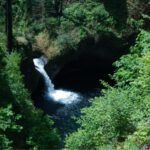




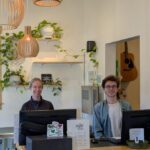
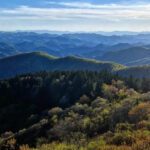

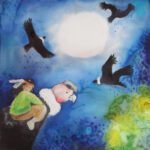
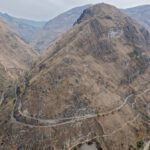
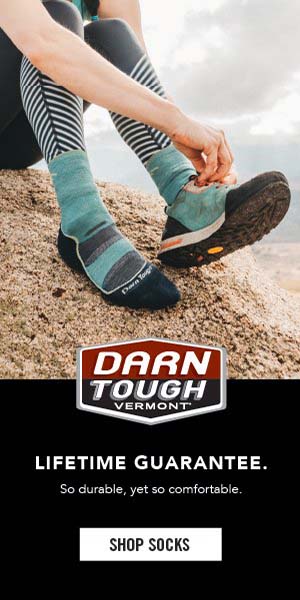
0 Comments